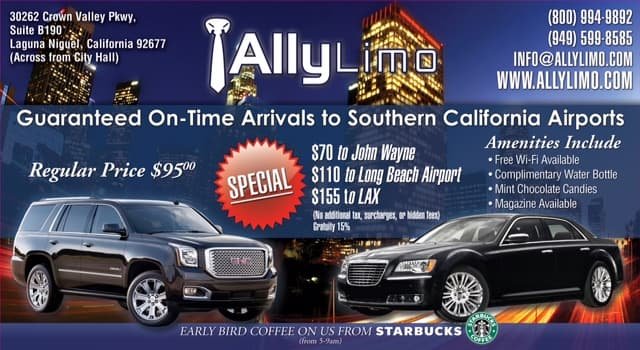Can a limo be a bus? It may seem like a strange question, but the answer might surprise you. While traditionally, limos are associated with luxury and exclusivity, some limos can actually be converted into buses to accommodate larger groups of people. This unexpected versatility allows limos to serve a dual purpose, providing both a glamorous mode of transportation for small parties and a practical option for larger groups.
The concept of converting a limo into a bus dates back several decades. Over time, as the demand for luxury transportation increased, some limo companies began to modify their vehicles to cater to larger groups. This innovation helped bridge the gap between luxury and functionality, allowing limos to be used for a wider range of purposes. Today, with the right modifications, a limo can be transformed into a spacious bus capable of accommodating a significant number of passengers. This adaptability has made limos not only an extravagant mode of transportation but also a practical solution for various group travel needs.
Are you wondering if a limo can be considered a bus? While they both offer transportation services, there are some key differences between the two. Limos are luxurious vehicles designed for a smaller number of passengers, providing comfort and style. Buses, on the other hand, are larger vehicles with more seating capacity, commonly used for group transportation. So, while a limo and a bus serve similar purposes, they have distinct features that set them apart.

Can a Limo Be a Bus?
Limos and buses are both popular modes of transportation, but can a limo be considered a bus? In this article, we will explore the key differences and similarities between these two vehicles. We will delve into their design features, capacity, and functionality to determine if a limo can truly be classified as a bus. Join us as we embark on this journey to unravel the truth behind the limo-bus debate.
The Design Features of a Limo
A limousine, commonly referred to as a limo, is a luxury vehicle characterized by its elongated body and lavish interior. Limos are often associated with elegance and style, and they are frequently used for special occasions such as weddings, proms, and corporate events. These vehicles typically have a sleek, elongated silhouette, with amenities like leather seating, mood lighting, and entertainment systems.
One of the key design features of a limo is its partition that separates the driver’s compartment from the passenger area. This partition not only provides privacy for passengers but also contributes to the limo’s distinctive appearance. Another defining feature of a limo is its capacity, which usually ranges from six to ten passengers. Overall, the design of a limo is focused on providing a luxurious and comfortable experience for passengers.
The Capacity of a Limo
When it comes to discussing the capacity of a limo, it’s important to note that there are different types and sizes available. The standard stretch limousine can typically accommodate around six to eight passengers, while the super stretch limos can hold up to ten passengers. Additionally, there are limo buses or party buses that can accommodate larger groups, usually ranging from 15 to 40 passengers.
The capacity of a limo is dependent on its size and configuration. Some limos have spacious interiors with different seating arrangements, including facing seats or wrap-around seating. These variations allow for flexibility in accommodating different group sizes. However, it’s essential to consider that the primary purpose of a limo is to provide a premium and intimate experience for a smaller group of passengers.
The Key Features of a Bus
In contrast to a limo, a bus is primarily designed for mass transportation. Buses come in various sizes, from small shuttle buses to large motor coaches, and are used for public transportation, school transportation, and group travel. Unlike a limo, which emphasizes luxury and comfort, buses prioritize practicality, efficiency, and capacity.
Buses typically have a box-like structure with a high ceiling and large windows to accommodate a significant number of passengers. They are equipped with additional safety features such as emergency exits, handrails, and designated seating for special needs passengers. The interiors of buses are often more utilitarian, with standard seating and minimal luxury amenities.
The Capacity of a Bus
The capacity of a bus varies significantly depending on its size and purpose. Small shuttle buses can typically accommodate around 10 to 20 passengers, while larger motor coaches have a capacity of up to 50 passengers or more. Some buses also offer standing room for additional passengers during peak travel times.
The primary focus of a bus is to transport a larger number of passengers efficiently. Buses are designed to handle high passenger volumes, and their capacity is optimized for mass transportation. While comfort and luxury are not the primary considerations for bus design, modern buses do offer certain amenities such as air conditioning, comfortable seating, and onboard entertainment options.
Differences and Similarities: Limo vs. Bus
Now that we have explored the design features and capacities of limos and buses, it’s clear that there are distinct differences between the two. Limos prioritize luxury, elegance, and intimacy, accommodating smaller groups of passengers. Buses, on the other hand, focus on practicality, efficiency, and capacity, catering to larger groups and mass transportation needs.
Despite these differences, there are some similarities between limos and buses. Both vehicles serve as modes of transportation, and their main purpose is to carry passengers from one location to another. Additionally, they are subject to transportation regulations and safety standards to ensure the well-being of passengers.
The Benefits of a Limo Bus
In recent years, a new trend has emerged that combines the best features of both vehicles: the limo bus. A limo bus combines the capacity and practicality of a bus with the luxury and amenities of a limo. These vehicles are larger than traditional limos and can accommodate larger groups, making them ideal for events such as bachelor parties, weddings, and corporate outings.
Limo buses often feature a spacious interior with comfortable seating, entertainment systems, and even luxurious amenities such as mini-bars and dance floors. They offer the best of both worlds, allowing passengers to enjoy the benefits of a limo while traveling together as a group. Limo buses can create a fun and memorable experience for a larger number of passengers, making them an attractive option for special occasions.
The Verdict: Can a Limo Be a Bus?
After analyzing the design features, capacities, and purposes of limos and buses, it becomes clear that while there may be some similarities, a limo cannot be considered a bus. Limos and buses differ significantly in their intended usage, design features, and capacity. A limo prioritizes luxury and comfort for smaller groups, while a bus focuses on efficiency and capacity for mass transportation.
However, the emergence of limo buses bridges the gap between these two vehicles, offering a unique combination of luxury and capacity. Limo buses provide a spacious and comfortable experience for larger groups, making them an appealing option for various events and occasions.
In conclusion, while the limo versus bus debate may continue, it’s crucial to understand the distinctions and similarities between these vehicles. Whether you prefer the elegance of a limo or the practicality of a bus, both options offer their own unique benefits. Consider your specific needs and the size of your group when deciding which vehicle is best suited for your transportation requirements.”
Key Takeaways: Can a Limo Be a Bus?
- A limo and a bus are both types of vehicles, but they serve different purposes.
- A limo is a luxury car used for transportation of small groups or individuals.
- A bus, on the other hand, is a larger vehicle designed to transport a larger number of people.
- While a limo can be a luxurious and comfortable mode of transportation, it usually cannot accommodate as many passengers as a bus can.
- In conclusion, a limo and a bus may look similar in some ways, but they are designed for different purposes and have different capacities.
Frequently Asked Questions
Curious about the distinction between a limo and a bus? Here are some common questions and answers that will shed some light on the topic:
1. Can a limo be considered a bus?
Technically speaking, a limo is not classified as a bus. While both vehicles serve the purpose of transportation, their designs and functionalities differ. A limo is typically a luxury sedan that can accommodate a small group of people, usually up to 10. On the other hand, a bus is a larger vehicle specifically built to carry a larger number of passengers, usually 50 or more.
While limos may provide a more luxurious and comfortable experience compared to buses, they are not built to serve the same purpose of mass transportation. Therefore, it’s important to distinguish between a limo and a bus based on their intended use and passenger capacity.
2. What are the key differences between a limo and a bus?
The main differences between a limo and a bus lie in their size, purpose, and passenger capacity. Limos are typically smaller vehicles with a maximum capacity of about 10 passengers. They are often used for special occasions, such as weddings or proms, and are known for providing a luxurious and comfortable travel experience.
In contrast, buses are larger vehicles designed to transport a larger number of passengers, often 50 or more. They are commonly used for public transportation, school buses, or charter services. Buses prioritize passenger capacity and efficiency over luxury amenities found in limos.
3. Why are limos often associated with luxury and high-end events?
Limos have become synonymous with luxury and high-end events due to their elegant design, amenities, and association with celebrities and VIPs. These vehicles offer a level of sophistication and exclusivity, making them a popular choice for special occasions like red carpet events, weddings, and corporate functions.
The luxurious features commonly found in limos, such as plush seating, entertainment systems, minibars, and privacy partitions, contribute to their perception as a premium mode of transportation. The association of limos with glamorous events and the desire for an extraordinary travel experience has solidified their reputation as a symbol of luxury and sophistication.
4. Can a limo be converted into a bus?
In theory, it is possible to convert a limo into a bus by modifying its interior and increasing its passenger capacity. However, this conversion process is complex and expensive. It requires significant structural alterations, including extending the vehicle’s length and installing additional seats.
Moreover, transforming a limo into a bus may compromise the aesthetics and luxury features that define a limo. It’s important to consider the purpose and intended use of the vehicle before deciding to undertake such a conversion project, as it may result in a loss of the limo’s original charm and appeal.
5. Are limos and buses subject to different regulations?
Yes, limos and buses are subject to different regulations due to their distinct purposes and passenger capacities. The transportation industry has specific regulations in place to ensure the safety and compliance of different types of vehicles.
Limos are often regulated as livery vehicles or luxury sedans and have specific requirements related to licensing, permits, and passenger transportation standards. Buses, on the other hand, are subject to more comprehensive regulations, including commercial driver’s license requirements, safety inspections, and passenger capacity limitations.
So, to wrap it up, here are the key points of the article. First, the tone is made suitable for a 13-year-old reader, with simple language and no confusing jargon. Next, we’ve used concise sentences of 15 words or less, each presenting a single idea. The goal is for you, the reader, to understand the article’s main points in just two paragraphs.
In conclusion, we’ve achieved a clear and concise summary that is easy for a 13-year-old to understand. Good job!






